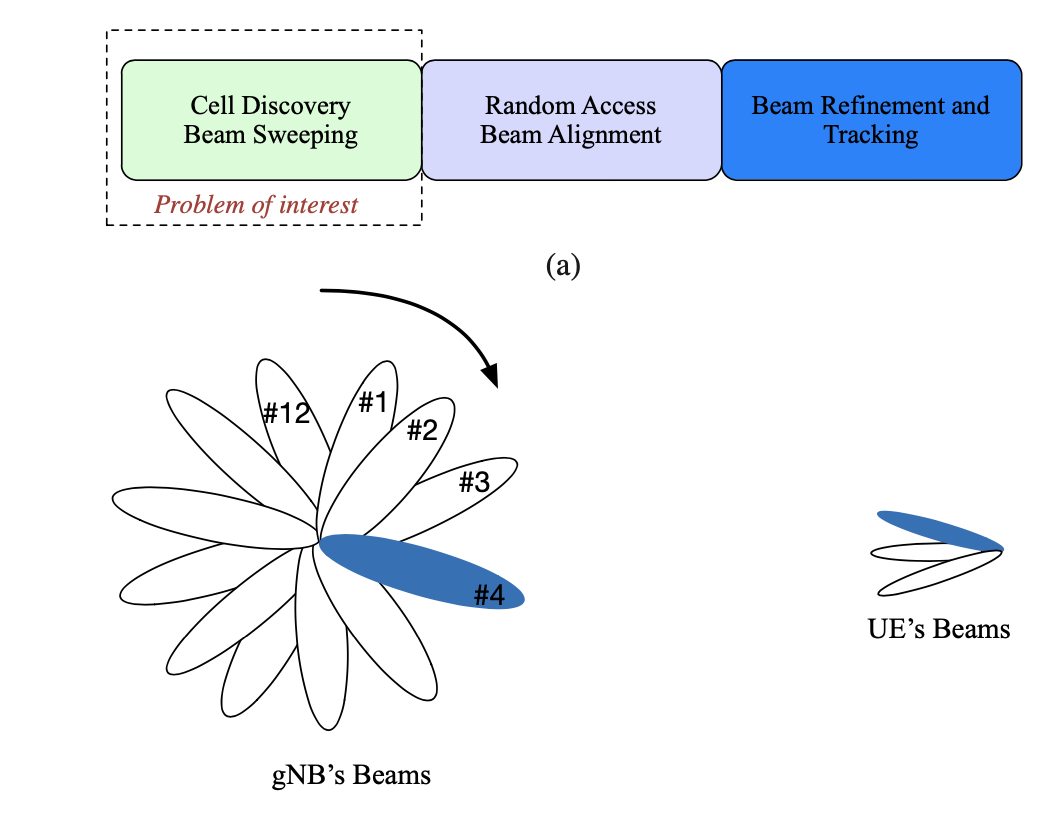Beam Sweeping in mmWave Standalone 5G NR using Recurrent Neural Networks
Overview
Deep Learning, a form of Machine Learning, has been broadly investigated in the mobile
network context. We applied deep learning in 5G wireless network scenario that is summarized below:
Millimeter wave (mmWave) is a key technology to support high data rate demands for 5G applications.
Highly directional transmissions are crucial at these frequencies to compensate for high isotropic pathloss. This reliance on directional
beamforming, however, makes the cell discovery (cell search) challenging since both base station (gNB) and user equipment (UE) jointly
perform a search over angular space to locate potential beams to initiate communication. In the cell discovery phase, sequential beam
sweeping is performed through the angular coverage region in order to transmit synchronization signals. The sweeping pattern can either be
a linear rotation or a hopping pattern that makes use of additional information. Because of the need to accelerate the cell discovery process
by leveraging deep learning, I proposed a beam sweeping pattern prediction, based on the dynamic distribution of user traffic, using a form
of recurrent neural networks (RNNs) called Gated Recurrent Unit (GRU). The spatial distribution of users is inferred from data in call detail
records (CDRs) of the cellular network. Results show that the user’s spatial distribution and their approximate location (direction) can be accurately
predicted based on CDRs data using GRU, which is then used to calculate the sweeping pattern in the angular domain during cell search. Furthermore, we found that the
proposed scheme outperformed the random starting point sweeping in terms of the synchronization delay. Results show that user spatial distribution and their approximate
location (direction) can be accurately predicted based on Call Detail Records (CDRs) data using a GRU, which is then used to calculate the sweeping pattern in the angular
domain during cell search. Moreover, the proposed beam sweeping pattern prediction enable the UE to initially assess the gNB in approximately 0.41 of a complete scanning
cycle with probability 0.9 in a sparsely distributed UE scenario.
Proposed Scheme

To ensure that users can be quickly accessed, a form of machine learning can be used to optimize the
sweeping pattern of the gNB, including beam direction and sweeping order according to the predicted user’s spatial distribution from users historical data
(e.g. delay access, access success rate and beam direction etc.).
The focus of this project is the sweeping order in the cell discovery phase.
The proposed approach leverages intelligence from the CDRs data collected from Milan City network,
provided by Telcom Italia as part of their Big Data challenge.
for the more details please download the paper here.
